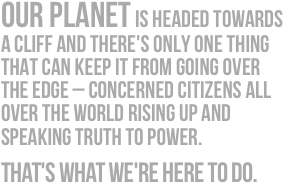By J. Taj Schottland
The best revelations come when sitting in a pub with friends having a good old fashioned political argument. Our discussion started over Afghanistan and the War on Terror. The conversation quickly heated up when we tackled President Obama’s recent speech outlining his plan to send 30,000 more US soldiers to the area. We had our differences in opinion regarding whether Obama was making a good choice. We realized that a lot of our dialogue hinged on whether we were convinced by Obama’s stylish rhetoric.
Since we are on day one of our Copenhagen adventure, the talk quickly shifted to climate change rhetoric. What would effective climate rhetoric entail?
I raised the possibility that there is one particularly important aspect of climate rhetoric that we need to address: that is the use of differing baselines that industries and countries are using to make their emission reduction pledges look impressive. Up until recently most countries have made their pledges based on 1990 levels of greenhouse gas emissions. To put it simply, a country stated how much greenhouse gas they emitted during the year 1990. Then they made a pledge to reduce their emissions by a certain percentage below their 1990 levels of emissions by a specific future date. Recently the slick rhetoric machines of big developed countries have realized that if they use a more recent base year, say 2005, then their percentage reduction will look impressive. When their percentage reduction is announced the media and the general public often fail to notice that the percentage reductions are below recent base years, rather than the traditional 1990 base year.
This matters why? The US put forth the pledge of reducing emissions between 17 and 20 percent by the year 2020. This is good right? Actually this emission reduction is extremely weak compared to what is required. Yes, a 20% reduction compared to 1990 would be awesome, but the US pledge of 20% reduction is below 2005 levels. Based on 2005 levels the pledge is simply not good enough because it only equals a 3.5% reduction below 1990 levels. This does not approach the necessary reductions required to reverse the dangerous effects of human induced climate change.
My question is this: how do we educate the general public to understand and care about emission pledges and specifically how those pledges are deeply affected by the base year used? Any thoughts?


